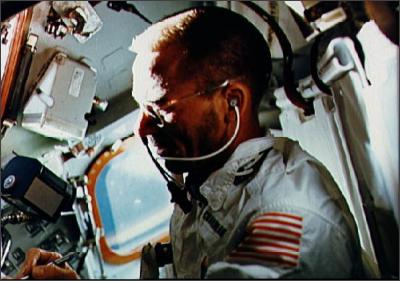Three leaves of kale on a small white plate, drizzled with olive oil and balsamic vinaigrette from a a pipette. The only fresh greenhouse grub eaten here in at least five years.
Plastic electric candles at the dinner table. Yellow molded flames that flicker. Digital imitates analog, as usual.
Meals cooked, meals logged, meals weighed, meals photographed, meals shared, meals cleared, meals planned, meals made, meals shared.
Tests for noses to identify food smells, to see airflow, to map sinus shapes. A foam plug expands in one nostril, mask over nose and mouth, an airtight seal. Breath normally. Now, press “record.”
Tae-bo in the mornings, sock-footed. Feel the rivet bumps on the lab floor, and kick, and step, and punch, and step.
Calvin and Hobbes in the bathroom, Something Under the Bed is Drooling, Spaceman Spiff, and frustratingly faulty plumbing.
Stomacher, a machine to mash up foods for biochemical analysis. Stomacher, a delightful word when said with a Puerto Rican accent.
The robotic rover awaits instructions to hopefully, one day, follow its human, to haul rocks or a spectrometer or dandelion wine. Some kind of habitat-warming gift for new neighbors?
EVA team to Hab Comm. Do you read? Hab Comm. Go ahead. EVA team is out the airlock. Roger, EVA team. Enjoy the hike.



 On April 15, the
On April 15, the  In January, the HI-SEAS crew had a test-run of sorts. We took part in a two-week simulated Mars mission at the Mars Desert Research Station (MDRS), just outside Hanksville, Utah. The purpose was to test protocols for our main food study as well as for our own HI-SEAS projects.
In January, the HI-SEAS crew had a test-run of sorts. We took part in a two-week simulated Mars mission at the Mars Desert Research Station (MDRS), just outside Hanksville, Utah. The purpose was to test protocols for our main food study as well as for our own HI-SEAS projects.